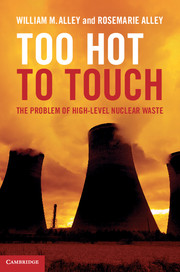Introduction
Published online by Cambridge University Press: 05 February 2013
Summary
On Labor Day in 1954, President Eisenhower appeared on television to announce the start of construction of the Nation's first nuclear power plant. The plant was to be built in the small town of Shippingport, Pennsylvania on the Ohio River, about 25 miles (40 km) west of Pittsburgh. The site was not far from Titusville, Pennsylvania, the birthplace of the petroleum industry, and was almost on top of one of the world's greatest coal fields. The Pittsburgh utility had come onboard the demonstration project for one basic reason – pollution control. Pittsburgh, once the “Smoky City,” had instituted strict air pollution requirements, and the local citizens were resisting plans for a coal-fired power plant.
President Eisenhower, vacationing in Denver, Colorado, made good use of the new television medium to dramatize the event. The President held up a large neutron-generating “magic wand” for the viewers to behold. As he waved the atomic-age magic wand over a neutron counter, an electronic signal traveled 1,200 miles (1,900 km) from Denver to Shippingport. The signal activated an unmanned, remote-controlled bulldozer which began to break ground for the new plant. It was an impressive feat. The local crowd rose to their feet and applauded. Two weeks later, Lewis L. Strauss, Chairman of the Atomic Energy Commission, delivered his oft-cited speech that “Our children will enjoy in their homes electrical energy too cheap to meter.”
- Type
- Chapter
- Information
- Too Hot to TouchThe Problem of High-Level Nuclear Waste, pp. xiii - xivPublisher: Cambridge University PressPrint publication year: 2012



